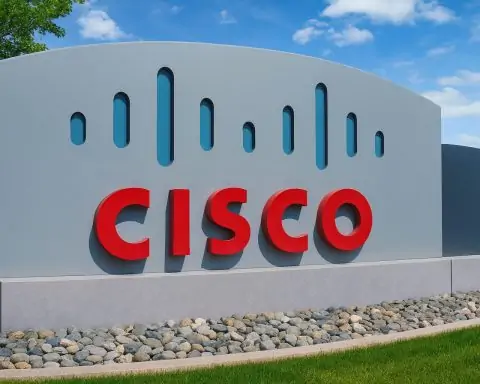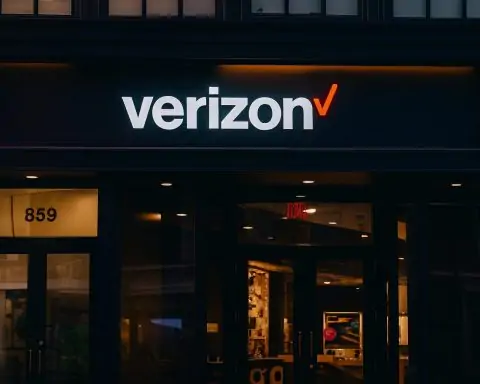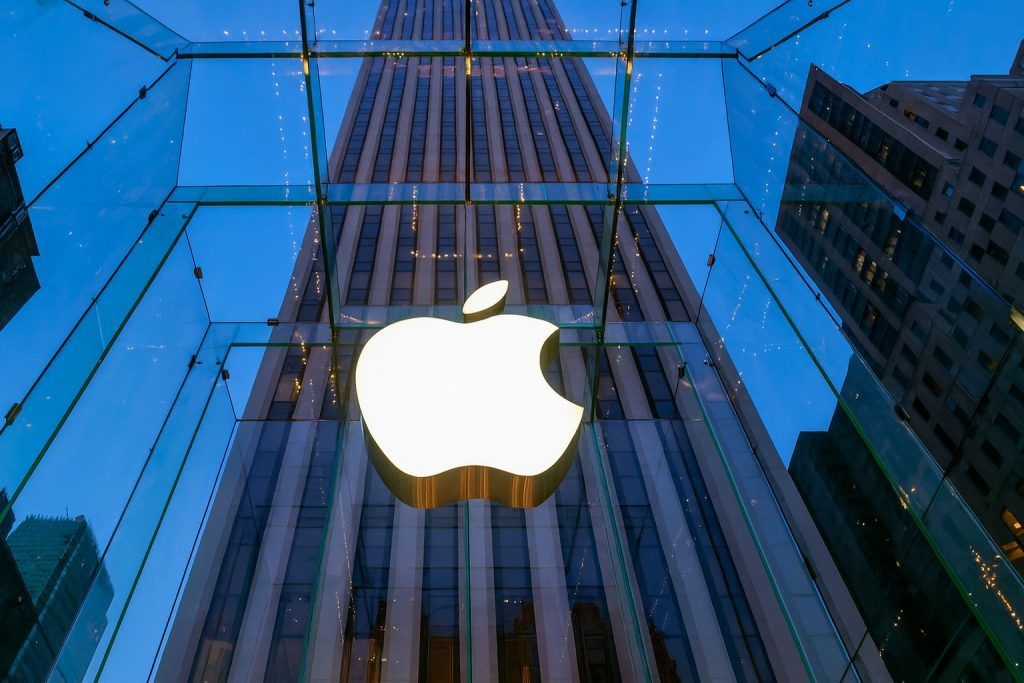Intel stock (NASDAQ: INTC) is under pressure today, even as the company’s advanced chip-packaging technology gains visibility with blue‑chip customers and institutional money shuffles in and out of the name.
Around the time of writing on November 18, 2025, Intel shares are trading in the mid‑$30s (about $34.7 per share), down roughly 2–3% over the last 24 hours, according to real‑time quote services. [1] Despite today’s pullback, the stock remains dramatically higher than it was at the start of 2025, after a powerful rally fueled by an AI rebound, cost cuts, and a landmark partnership with Nvidia. [2]
Below is a breakdown of what’s moving Intel stock today and what investors are watching next.
Intel Stock on November 18, 2025: Price Snapshot
- Latest price: ~$34.7 per share
- Day move: roughly –2% to –3% versus the prior close, based on intraday data. [3]
- 52‑week range: around $17.7 to $42.5, highlighting how far the stock has come off its 2024 lows. [4]
Third‑party forecast sites still show Intel trading near the middle of that range following a huge 2025 rebound that at one point left shares up about 100% for the year, before recent profit‑taking. [5]
Today’s weakness comes despite multiple pieces of seemingly positive news around Intel’s packaging technology and new customers—underscoring how much optimism is already priced in.
1. Advanced Packaging: Apple and Qualcomm Interest, but Shares Slip
The biggest Intel‑specific storyline around November 18, 2025 is its advanced packaging business, the part of the company that helps customers stack and connect chiplets using technologies like EMIB and Foveros.
Two closely related developments stand out:
- TrendForce report – Apple and Qualcomm interest
Industry research firm TrendForce reported today that Apple and Qualcomm are exploring Intel’s EMIB advanced packaging, with Intel “reportedly gaining traction” as these customers look to diversify beyond TSMC on packaging for complex chips. [6]- The report frames Intel as a credible second source in advanced packaging, even if it still trails TSMC in leading‑edge wafer manufacturing.
- It also highlights broader industry demand for high‑density packaging to support AI, 5G, and advanced mobile SoCs.
- Follow‑through coverage – a new frontier for Intel’s foundry push
Over the weekend, tech media described Intel’s advanced packaging as a potential “new frontier” for the company’s foundry ambitions, noting that Apple and Qualcomm kicking Intel’s tires would be a significant vote of confidence even if formal deals are still speculative. [7]
Despite this, Intel stock is not rallying on the news:
- A fresh note on TipRanks today points out that Intel’s advanced packaging is “drawing interest” while the stock still “sinks,” with shares off nearly 3% in Monday afternoon trading as investors lock in gains from the recent rally. [8]
Takeaway:
The market appears to view today’s packaging headlines as incrementally positive but already largely priced in. Investors want to see concrete, revenue‑bearing contracts and improved foundry margins, not just interest and early technical evaluations.
2. Institutional Flows: New Buyers and Major Sellers on the Same Day
Another theme on November 18 is a flurry of institutional ownership disclosures for Intel, painting a mixed picture:
- Intrust Bank NA significantly boosts its Intel stake
A new MarketBeat filing shows Intrust Bank NA increased its Intel holdings by about 140.7% in Q2, buying 22,576 shares to bring its position to 38,626 shares, worth roughly $865,000 at the time of the filing. [9] - Intech Investment Management LLC also adds shares
Another today‑dated alert reports that Intech Investment Management LLC bought additional Intel shares, adding to the number of institutions that have quietly accumulated the stock during its turnaround. [10] - Massachusetts Financial Services (MFS) trims exposure
On the other side, a separate filing shows MFS cut its Intel position by about 7.9%, selling over 600,000 sharesin the most recently reported quarter. [11] - Overall ownership is heavily institutional
MarketBeat’s data indicates that around two‑thirds of Intel’s shares are held by institutions, reinforcing that the name is dominated by professional money, factor funds, and index products. [12]
These filings don’t necessarily reflect today’s exact trades—they’re lagged 13F disclosures—but they shape sentiment around whether “smart money” is buying into or fading Intel’s AI and foundry story.
Takeaway:
The picture is nuanced: some funds are adding aggressively, while others are taking profits after a big run‑up. The net message for retail investors is that professional managers see Intel as controversial but important enough to actively size, not a forgotten relic.
3. Wall Street View: Neutral Consensus, Fresh Warnings
From the sell‑side research desk, today’s key headline is a Bernstein note:
- Bernstein reiterates “Neutral,” $35 target
MarketScreener reports that Bernstein reaffirmed its neutral rating on Intel today, keeping its price target at $35—slightly above where the stock currently trades. The note characterizes shares as fairly valued after the 2025 rally, with limited near‑term upside. [13]
Broader analyst consensus remains cautious:
- MarketBeat’s survey of analysts shows an average 12‑month price target around $34.8, with a wide spread from $20 to $52, and a consensus stance closer to “Reduce” / “Hold” than “Buy.” [14]
- Other aggregators like Zacks, Investing.com, and TickerNerd place the average target in the mid‑to‑high $30s, with the majority of analysts rating Intel as Hold/Neutral, a small group recommending Buy, and a notable minority at Sell. [15]
- Benzinga’s compilation of 32 analyst targets shows a lower average near $31.2, underscoring how divided the Street is on fair value. [16]
Several recent downgrades continue to hang over the stock:
- HSBC cut Intel to “Reduce” in October, even while raising its price target to $24, arguing that the stock had become overbought near its 52‑week high and that risks in the turnaround remain significant. [17]
- Citi downgraded Intel from Neutral to Sell shortly after the Nvidia partnership announcement, saying the market is over‑pricing the odds that Intel’s leading‑edge foundry can compete with TSMC anytime soon. [18]
- Seeking Alpha contributors this month have also cut their ratings, warning that Intel’s “incredible rally” may be overextended relative to fundamentals and that the valuation discount versus peers has largely vanished. [19]
Takeaway:
Wall Street’s message on November 18 is clear: the turnaround looks real, but expectations are high. At current prices, many analysts see Intel as a “show‑me” stock—it needs to prove that the foundry and AI strategies will translate into sustainable earnings, not just headlines.
4. Strategy Backdrop: Nvidia Deal, AI GPUs, and a New CEO Era
To understand today’s trading, it helps to recall why Intel rallied so hard earlier in 2025.
Nvidia’s $5 Billion Bet and Strategic Alliance
On September 18, 2025, U.S. markets hit record highs after a Fed rate cut—and Intel became one of the day’s biggest stories. News broke that Nvidia would invest around $5 billion in Intel, part of a broader alliance spanning AI PCs and data center platforms. [20]
A joint announcement later clarified that:
- Intel will build Nvidia‑custom x86 CPUs for AI infrastructure platforms.
- For PCs, Intel agreed to produce processors that incorporate Nvidia RTX GPU chiplets, tightly integrating Nvidia graphics with Intel’s x86 architecture. [21]
The deal was widely seen as a lifeline and validation for Intel’s manufacturing roadmap, even as some analysts warned that the stock had moved too far, too fast on the news. [22]
New AI Data Center GPU: Crescent Island
In October, Intel unveiled “Crescent Island,” a new data center GPU optimized for AI inference workloads, adding to its AI accelerator portfolio. The chip is designed for high memory capacity and energy‑efficient performance, using next‑generation Xe3‑based architecture and targeting cloud and enterprise customers. [23]
The announcement signals Intel is not abandoning the high‑end AI accelerator race to Nvidia and AMD, even if it still trails them in market share.
Q3 Earnings: Cost Cuts and a Turnaround Narrative
Intel’s late‑October earnings reinforced the sense of a tentative turnaround:
- Reuters reported that Intel beat profit expectations in Q3 2025, helped by aggressive cost‑cutting, sending the stock to an 18‑month high after a jump of nearly 8% in early trading. [24]
- TechCrunch highlighted that Intel added roughly $20 billion to its balance sheet in Q3, thanks in part to three large external investments, but investors were left wanting more detail on the foundry roadmap and long‑term profitability. [25]
MarketBeat’s institutional‑flow notes mention Q3 numbers of $0.23 in EPS on $13.65 billion in revenue, with Intel guiding Q4 EPS around $0.08, underscoring that profitability remains fragile even after the beat. [26]
Leadership and AI Organization Shake‑up
Corporate governance is also part of the story:
- After Pat Gelsinger’s ouster in late 2024, Intel appointed Lip‑Bu Tan as CEO in March 2025, who has since undertaken a sweeping restructuring with tens of thousands of layoffs and cancelled fab projects. [27]
- Last week, Intel confirmed that CEO Lip‑Bu Tan will personally oversee the company’s AI efforts after its chief technology officer, Sachin Katti, left for OpenAI. [28]
This move is being read as a sign that AI is now the core strategic battleground inside Intel, and that the board expects top‑level accountability for execution.
Takeaway:
All of this explains why Intel stock is still up sharply in 2025. But it also explains why today’s downgrades and profit‑taking hurt: expectations for the AI + foundry + Nvidia alliance story have risen dramatically.
5. Competitive and Industry Pressures
Even on a day dominated by Intel headlines, the broader chip landscape matters:
- AMD keeps chipping away at x86 market share
Recent data from Mercury Research, reported by Tom’s Hardware and PCWorld, shows AMD now selling over 25% of all x86 chips and powering about one‑third of desktop systems, gaining share at Intel’s expense across desktops, servers, and laptops. [29] - TSMC and Samsung are investing heavily in advanced nodes and packaging
TrendForce notes that TSMC is planning up to 12 new advanced process and packaging fabs in Taiwan as 2nm supply tightens, cementing its lead in cutting‑edge manufacturing and packaging scale. [30] - AI sentiment is tied to Nvidia’s performance
A new Reuters piece today asks whether Nvidia’s upcoming earnings will mark a “bubble or breakout” moment for the AI trade—a narrative that affects the entire AI hardware ecosystem, including Intel. [31]
Takeaway:
Even if Intel executes well on packaging and AI, it must fight in an environment where AMD, TSMC, Samsung, and Nvidia remain extremely strong. That competitive backdrop helps explain the cautious tone in many analyst reports.
6. What to Watch Next for Intel Investors
Looking beyond today’s red numbers, several near‑term catalysts could move INTC:
- RBC Capital Markets TIMT Conference (today)
Intel’s investor‑relations site confirms that John Pitzer, Intel’s VP of Global Treasury and Investor Relations, is scheduled to speak at the RBC Capital Markets TIMT Conference at 12:20 p.m. PT on November 18, 2025. [32]- Any commentary on advanced packaging customers, Nvidia collaboration timelines, or foundry margin targets could sway sentiment.
- Concrete deals around advanced packaging
Today’s reports of Apple and Qualcomm interest are encouraging, but investors will be looking for formal customer announcements—especially ones that clearly spell out volume, pricing, and multi‑year commitments. [33] - Further institutional repositioning
With filings showing some funds buying aggressively and others trimming, more 13F data could reveal whether net institutional positioning is rising or falling as Intel’s rally matures. - Analyst revisions after the recent pullback
If Intel’s share price continues to drift down toward the low‑to‑mid $30s, analysts who were previously cautious may start to see better risk‑reward, while others could further cut targets if they doubt foundry progress.
7. Bottom Line: A High‑Expectations Turnaround Stock
On November 18, 2025, Intel stock sits at the intersection of exciting technology news and rising skepticism:
- Bullish side:
- Growing interest in Intel’s advanced packaging from heavyweights like Apple and Qualcomm.
- A multi‑billion‑dollar strategic partnership with Nvidia that legitimizes Intel’s manufacturing roadmap.
- New AI data center chips like Crescent Island, and a CEO who is now personally overseeing the AI division.
- Bearish side:
- A stock that has already doubled this year, leaving less valuation cushion if the turnaround stumbles.
- Multiple downgrades (HSBC, Citi, and others) warning that investors may be over‑estimating Intel’s ability to quickly close the gap with TSMC and defend share from AMD.
- Ongoing structural challenges in the foundry business, where details on long‑term profitability are still limited.
For traders and long‑term investors alike, today’s dip looks less like a sudden shock and more like a pause in a high‑stakes re‑rating. Intel has moved from being a deep‑value turnaround to an AI‑leveraged, debate‑heavy story stock where every new packaging customer, cost‑cut, or downgrade can swing sentiment.
Important Note
This article is for informational and educational purposes only and does not constitute financial advice. Intel stock can be volatile, and investors should perform their own research or consult a licensed financial advisor before making investment decisions.
References
1. in.tradingview.com, 2. www.fool.com, 3. in.tradingview.com, 4. stockinvest.us, 5. www.fool.com, 6. www.trendforce.com, 7. wccftech.com, 8. www.tipranks.com, 9. www.marketbeat.com, 10. www.marketbeat.com, 11. www.marketbeat.com, 12. www.marketbeat.com, 13. www.marketscreener.com, 14. www.marketbeat.com, 15. www.zacks.com, 16. www.benzinga.com, 17. www.investing.com, 18. www.investing.com, 19. seekingalpha.com, 20. www.wsj.com, 21. nvidianews.nvidia.com, 22. www.investing.com, 23. newsroom.intel.com, 24. www.reuters.com, 25. techcrunch.com, 26. www.marketbeat.com, 27. en.wikipedia.org, 28. www.reuters.com, 29. www.tomshardware.com, 30. www.trendforce.com, 31. www.reuters.com, 32. www.intc.com, 33. www.trendforce.com








